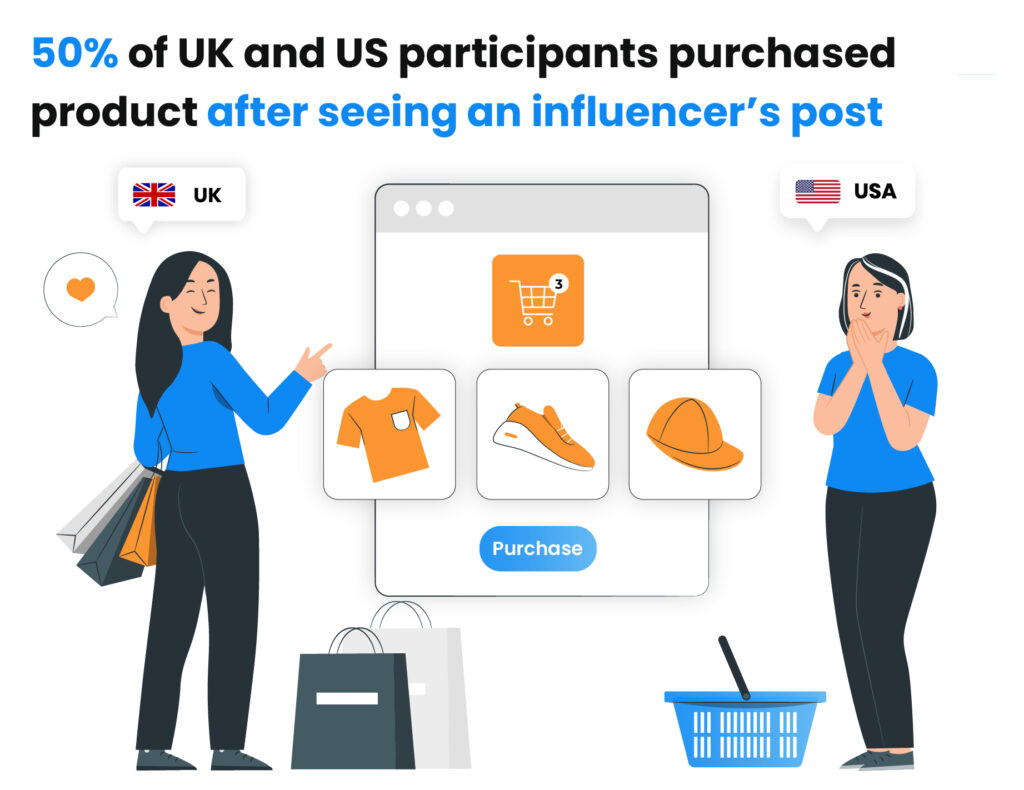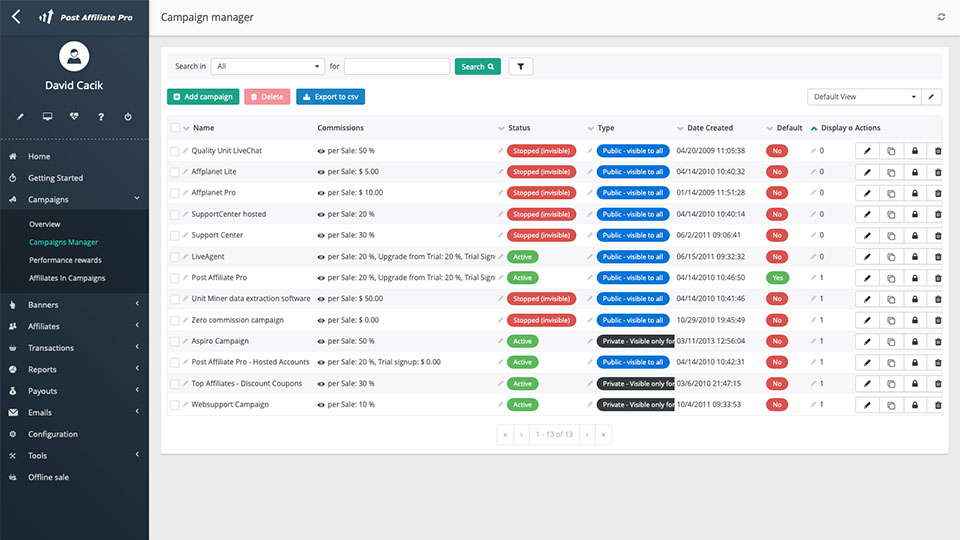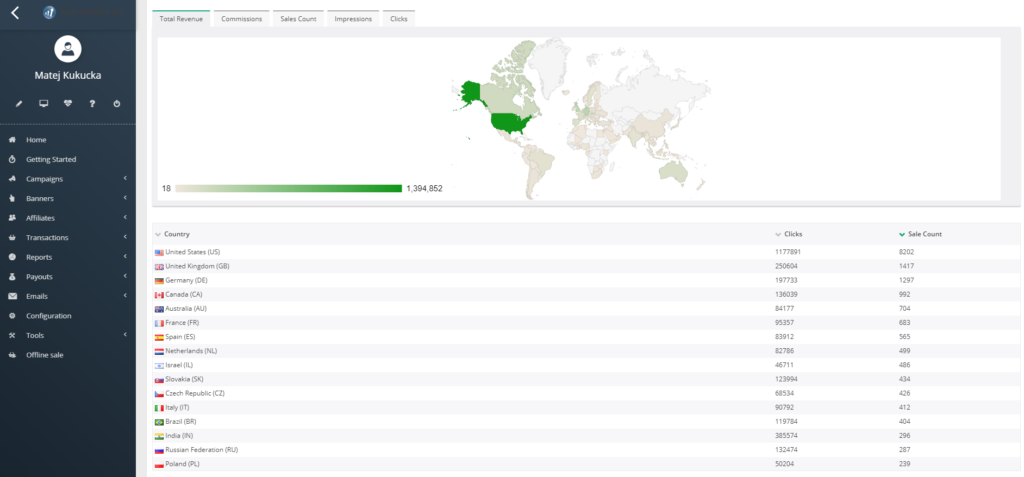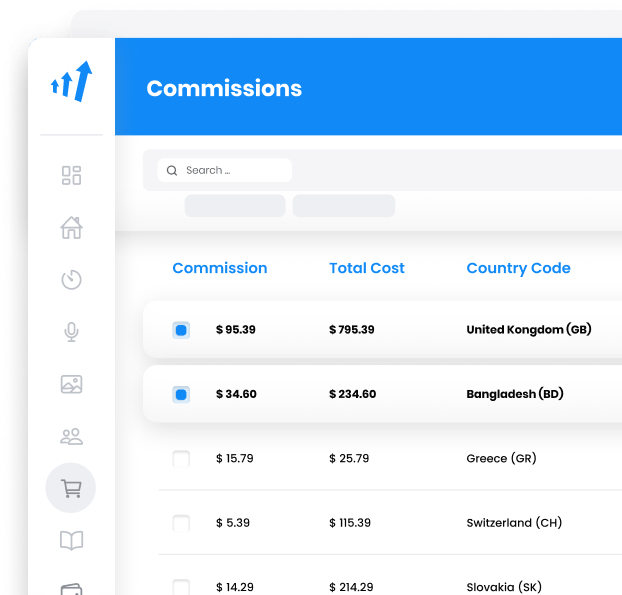Any marketing strategist will emphasize how important it is to know to who you’re selling your product. While it may be tempting, it’s not always ideal to parade your product around to the general public with optimistic expectations. Taking the time to clearly identify your target audience can benefit your marketing efforts in the long run. Finding your target customers and segmenting them into groups gives you the advantage of knowing where your potential customers come from, and why they would come to you for your product or service. This is the essence of creating buyer personas.
Nowadays, many consumers are overloaded with information, offers, and advertisements. Personalizing messages has been shown to be much more effective, as nearly 90% of consumers consider brands that have shown they understand and care about their personal needs. However, sending personalized messages requires one thing – to be personal. Knowing details and adding information that is relevant and helpful to your potential clients is an essential component of successful marketing techniques. By understanding your customers’ backgrounds, you can present useful information to them that is going to be received well. Statistics have shown that 75% of consumers are more likely to purchase from a brand that acknowledges them by name and recommends items based on past purchase history. All arrows point to benefits, so it’s time to ask: what exactly is a buyer persona, and how can it be developed? This article will define what a buyer persona is, highlight how they can benefit your marketing strategy, and offer tips on how to get started with them!

What is a buyer persona?
In order to begin the process of creating your buyer persona, it’s important to define what it actually is. A buyer persona is a detailed, fictional representation of someone in your target audience. It would be impossible to get to know each and every one of your prospective customers individually, so creating an elaborate description of those who would fit into your customer base is a good way to understand your model customers. A buyer persona represents your ideal customer and comes with a unique story or narrative around them. This story includes elements like motives for being interested in your product or service, demographics, and certain behavioral traits.
Organizing information like this results in having a robust idea of who you are marketing to. Remember that a single product or service can have many avenues of customers, meaning that sometimes having multiple buyer personas is necessary. Gathering as much information about each market segment as possible will allow you to make more detailed customer personas. The clearer your buyer persona is, the more effective your marketing strategy can be. Marketing strategies can be targeted at these specific types of customers, using relatable and helpful content relevant to your buyers’ needs.
Why are buyer personas important?
Buyer personas help you keep a check on when it comes to addressing customer needs. By creating a solid buyer persona, you map out the entire buying process customers go through, including aspects that could be important to your ideal buyer at any given time. This allows you to take an educated guess on what they might experience, as well as what could be useful to solve their uncertainties when they go through your sales funnel. Mapping out the buying process and releasing helpful and practical information at the correct time shows your customer you’re considerate of their needs. Sending personalized emails or offers to them at this time might make or break their experience. When it comes to marketing, there is no one-size-fits-all, so seeing their experience at eye-level would be ideal.

Remember that many of your potential customers come from different backgrounds, resulting in different motives for considering your product or service. By segmenting your target audience, you have a better chance of optimizing your marketing strategies. This on its own reduces the chances of them stepping out to find another competitor.
Ask relevant questions such as:
- What are my prospective customers looking for?
- What problem do they have that our product or service can solve for them?
- What do my prospective customers expect from my product or service?
- What would make us stand out from our competitors to our prospective customers?
- What do my prospective customers need in order to continue considering us?
Keeping these questions in mind will ensure your customers’ needs are a priority and allow you to optimize how you present the information needed for it to be relevant and well-received. Your buyer personas put you in the mind of your potential customers, giving your sales team insight into their motivations, doubts, and needs.
What are the benefits of creating a buyer persona?
Having your buyer personas clearly defined results in more effective marketing strategies. When you know who your target customer is, you can design campaigns and offer solutions in a relatable manner. Approaching your target audience with personalized information definitely has an impact on their purchasing decisions. To put this into perspective, 59% of consumers stated that personalization does impact their purchasing decisions. One of the few benefits of creating a buyer persona is that the customers feel like they had a tailored experience. In fact, 87% of consumers have a positive image of brands that partake in the personalization of ads. There are many different elements of the buying cycle that can be modified to fit the needs and demographic of your buyer persona. Whether it’s how they interact with your business (physically or digitally), how they pay (option for installments), or how they browse your products (catalog navigation), there is plenty of opportunities to make each experience as smooth as possible.

Another benefit to creating a buyer persona is that your products become more focused on customer satisfaction, which is, therefore, more likely to be aligned with the customers’ needs. Product development, and later product features, are updated to the needs of the customers, which helps brands keep up with the market demand. Brands that don’t listen to the customer feedback result in their customer base searching for competitors that integrate feedback into their development. If customers highly valued smartphone camera quality, it would be good for the brand to dedicate efforts to improving their camera quality, as it was what customers focused on. If that brand released the next version of the smartphone with more storage but kept the camera quality the same, they would risk losing customers to competitors who spent time developing the camera.
This rolls into the next benefit that your marketing efforts are targeted to specific audiences. Knowing who will be on the receiving end helps your marketing team to create high-quality and valuable content. Not only that but knowing your audience well contributes to quality leads and customer retention. Since your marketing efforts are not based on generic information, it’s more likely to be received well, leading to better long-term marketing strategy results.
What are the 4 steps to creating a buyer persona?
Since your buyer personas will be a representation of your real prospective customer base, they naturally have to be based on legitimate data. While developing your detailed buyer personas, run through these steps to make sure your fictional representation is thorough and realistic.
Do audience research
Having a general idea of who makes up your customer base is a great place to start, but there’s still a long way to go. Research is absolutely essential since it builds a solid data-supported foundation of who your real customers were, who your current customers are now, and who they could be in the future. Gather data from your existing customer base, Google analytics, and social media analytics like Facebook Audience Insights for general demographic information. For a B2C buyer persona, pay attention to information such as age, location, language, interests, challenges, and spending patterns. For a B2B persona, look for what role they have in their business, their spending power, who makes the final purchasing decisions, and their overall business size. Highlighting which social media platform they use most is also vital information when conducting research.
Create surveys
Surveys are a great way to gather insights and they can offer you a glimpse of your target customers’ perspectives regarding their experience and buying decisions. A variety of surveys is available for you to further develop your buyer persona profiles. Below, you can find some of the more commonly used surveys, with some example questions.
- Net Promoter Score (NPS) – This survey measures the overall perception of your brand through customer experience. It gives insight into customer loyalty.
“On a scale of 0 – 10, how likely is it that you would recommend us to a friend or a colleague?”
- Customer Satisfaction (CSAT) – This survey measures how well the product or survey met (or surpassed) the expectations of the customer. In comparison to the NPS survey, CSAT is more focused on the product or service rather than the overall impression of the brand.
“On a scale of 1 – 5, how would you rate your overall satisfaction with the product or service you received?”
- Customer Effort Score (CES) – This survey measures how much effort a customer has to put in to retrieve information, have issues resolved, and receive the product or service. Ideally, the less effort needed, the better the score.
“[Brand] made reaching customer service agents fast and easy.” Answer using the Likert scale, from 1 – 5 (or 7), where 1: strongly disagree and 5 (or 7): strongly agree.
- Product Market Fit (PMF) – This survey measures the degree to which a product is needed in its market and satisfies its demand. By achieving the product-market fit, a brand fulfills customers´ needs, and the customer demand is sufficient for the brand to be sustained and profitable.
While the PMF requires both quantitative and qualitative data to be analyzed, an example of a question could be:
“Would segmented consumers who have rejected your competitors’ products on the market be willing to search for an alternative and consider yours?”
Remember there are a series of questions you can ask your customer base to get an idea of their preferences and experiences. You can absolutely include additional questions to elaborate on their answers. The customers’ feedback is always helpful and can be used to improve your products, services, and branding.
Segment your audience
Research can seem to be the bulk of the buyer persona creation process, but it gives you plenty of information to work with for the next steps. Organizing the data you gathered is where things get interesting. Naturally, the database of customers will lie on an entire spectrum of differences, so it’s a good idea to start finding similar aspects in their goals, motivations, and challenges. There are different ways to segment your audiences, through demographics, reasons for purchasing, or their professional background. Depending on your product or service, you may have more than one buyer persona, but starting with the most prominent one is a good idea. Think about the audience you sell to the most and try to build up on that one. Afterward, you can use this buyer persona template to create other ones thoroughly.
Buyer personas can be developed from certain similarities, such as:
- Age groups (toys and gadgets versus cleaning products)
- Gender (female hygiene products or facial aftershave for males)
- Location (outdoor grills versus snow shovels)
- Interests (sports, hobbies, or pets)
- Motivations (affordable stationery for students)
- Issues (wall filler putty or car de-icer)
- Industries (industrial lawn mowers for professional landscapists)
- Pain points (mental, physical, or emotional recurring issues that cause pain)
The more detailed a buyer persona is, the better you can understand their potential perspective and needs. With that being said, many of these similarities can and should be overlapped. Often buyer personas have multiple characteristics or demographic backgrounds that are important to consider as they have weight during their buying journey.
Create a name and story for your buyer persona
To create a thorough image of your buyer persona, information needs to be selected and attributed to this specific profile. Imagine you are uncovering a character and need to fill in all the details for you to be able to relay the description to someone else. What would be the most important? Begin the process by giving your buyer persona a name, as this automatically makes them personified. Afterward, ask yourself these questions to fill them into your buyer persona’s profile:
- How old are they?
- Where do they reside?
- What is their marital status? Family status? (Do they have any children or pets?)
- What is their level of education?
- What is their job position and what industry is it in?
- What is their career goal?
- What are their spending habits like?
- What is their spending power like?
- What are their interests?

Once these questions are answered, you can start writing a background story for this fictional representation. Stories are much more relatable than a raw list of answers. It fills in the overall picture and adds dimension to your buyer personas’ motivations, challenges, and goals. This, consequently, contributes to tailoring marketing campaigns that will be relatable and received well by them.
By creating a name and backstory, you animate the buyer personas’ profiles, making them seem more real to your marketing teams and easier to understand the overall context of their needs.
How to apply your buyer persona
Now that your buyer personas have been clearly identified and personified, it’s time to develop relevant content for them. Here are the next steps for your content marketing efforts once your customer personas are established.
Craft Tailored Digital Marketing and Sales Strategies
The whole point of creating a buyer persona was to get to know your ideal customer and their motivations, goals, and challenges that they encounter. With such a clear representation, your sales and marketing teams can personalize ad campaigns that offer relevant and helpful information to them. Tailor-fitting campaigns can go a long way, as 80% of consumers tend to trust brands that publish content relevant to them. Use the opportunity to apply the data you gathered and create relevant content that addresses issues or pain points your buyer personas may experience. If your buyer personas are in a younger age group, try modifying the language style to be more relevant and captivating. Visual content, language, and even specific social media channels are all ways to connect with your audience.
Remember that the needs of your customer base are a priority, and creating buyer personas is a method to understand these needs and offer the optimal solution. Audiences are dynamic, so be ready to react and adapt to changes in the industry or societal interests!
Rinse, Modify, Repeat
Depending on your product, service, or even the industry as a whole, you may need to create multiple buyer personas. While concentrating on a single market segment of your target audience might be sufficient for some, creating additional buyer personas is a sure way to expand your reach. There can definitely be multiple buyer personas for a single product, just as there can be several products for a single buyer persona. Getting a feel in the industry and applying your first buyer persona can help give you an idea of how to move on next. This can even include scaling up your efforts from targeting small businesses to larger businesses (with some modifications to the profile, of course).
Just as the market is continuously changing, so are the needs and opinions of the people. Make sure to consistently gather feedback and information from your customers so you can update old personas. Pay attention to survey answers and key performance indicators so you can modify your ad campaigns and tailor your strategies so they are optimal for your audience. As with many other things, once you have your first buyer persona template, the rest can be developed swiftly, so don’t hesitate to rinse and repeat the process!
Key Takeaways
Sometimes, creating a fictional character in your head can come to use in the physical world. Buyer personas are incredibly useful in marketing, as they offer businesses a chance to get to know their target audience and understand their needs and motivations. Since the customers are always a priority, it’s helpful to know the full context when creating the solutions for them. Developing buyer persona templates allows businesses to segment their target audience, learn about their ideal customers, and personalize marketing campaigns for them. Since personalized ads have been shown to be much more effective, understanding the customer becomes vital for any strategy.
Consequently, the benefits of using buyer personas include more targeted advertising and higher quality leads. Ideally, businesses that want to develop their buyer personas should focus on audience research, conducting surveys, and creating a background story for their profiles. In doing so, a template is created that can then be modified and updated for different industries, products, or services. Dedicating time and effort to buyer persona development is a no-brainer for any marketing team, so don’t hesitate to get on board and try out these tips!

Frequently Asked Questions
What is a buyer persona?
Buyer personas are best described as a detailed, fictional representation of an ideal customer from your target market.
How do you do buyer persona research?
The best way to do buyer persona research is to analyze data from your own existing customer base, along with Google Analytics and Facebook Insights. You can also conduct surveys for your customers to answer for further qualitative research.
Why is a buyer persona important?
Having a buyer persona profile allows your marketing strategies to be more effective, as your campaigns can be targeted to these specific types of customers using relatable and helpful content that is relevant to your buyers’ needs.
Doberman Media Affiliate Program
Accepting specific information, Doberman Media Affiliates offers a multi-level marketing program with various payout methods and a $100 minimum payout.
Streamx Digital Affiliate Program
Streamx Digital offers a single-tier affiliate program with a 5% commission rate. They accept worldwide traffic sources and have a minimum payout of $100.




